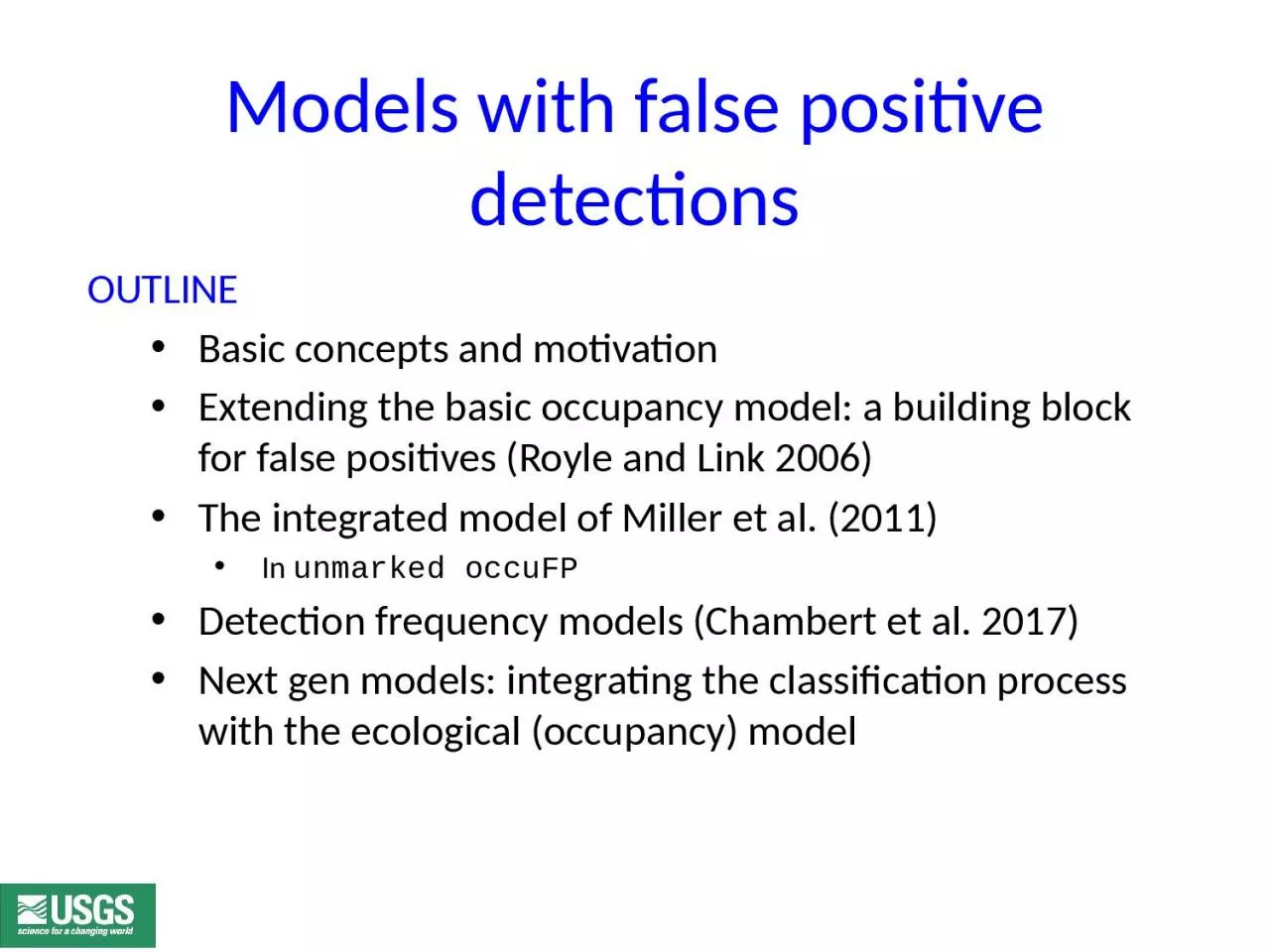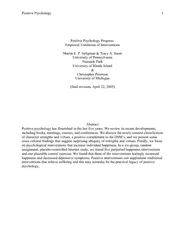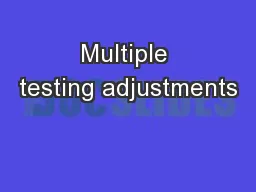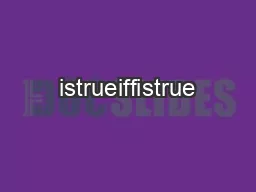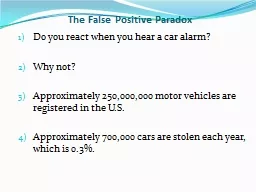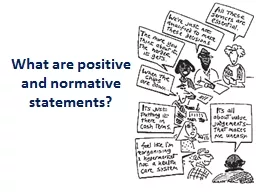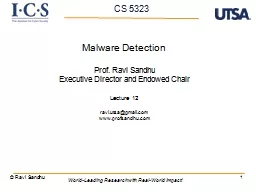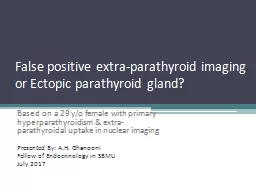PPT-Models with false positive detections
Author : lucinda | Published Date : 2024-03-13
OUTLINE Basic concepts and motivation Extending the basic occupancy model a building block for false positives Royle and Link 2006 The integrated model of Miller
Presentation Embed Code
Download Presentation
Download Presentation The PPT/PDF document "Models with false positive detections" is the property of its rightful owner. Permission is granted to download and print the materials on this website for personal, non-commercial use only, and to display it on your personal computer provided you do not modify the materials and that you retain all copyright notices contained in the materials. By downloading content from our website, you accept the terms of this agreement.
Models with false positive detections: Transcript
Download Rules Of Document
"Models with false positive detections"The content belongs to its owner. You may download and print it for personal use, without modification, and keep all copyright notices. By downloading, you agree to these terms.
Related Documents

